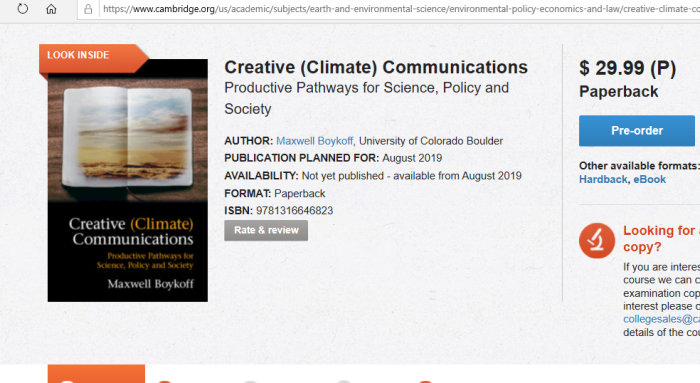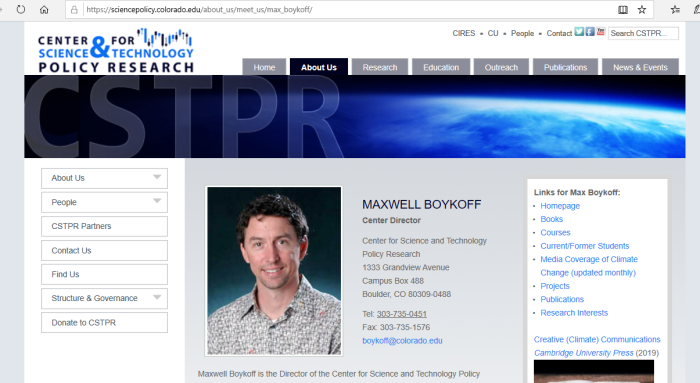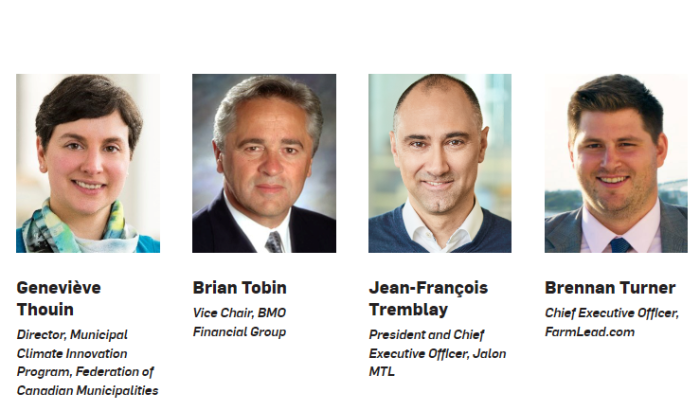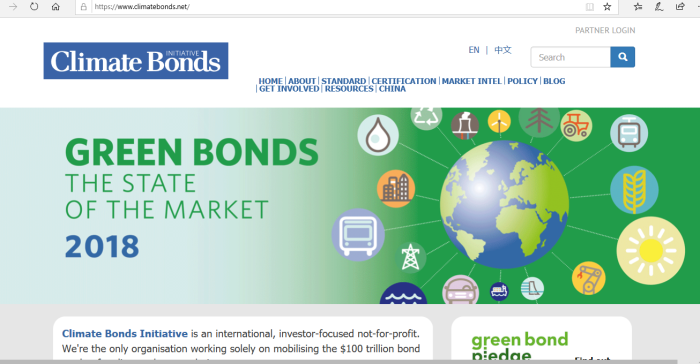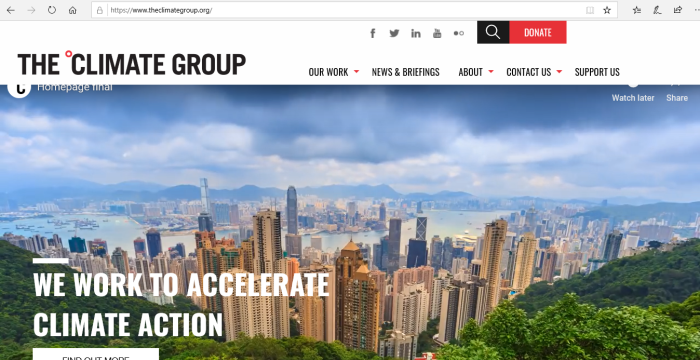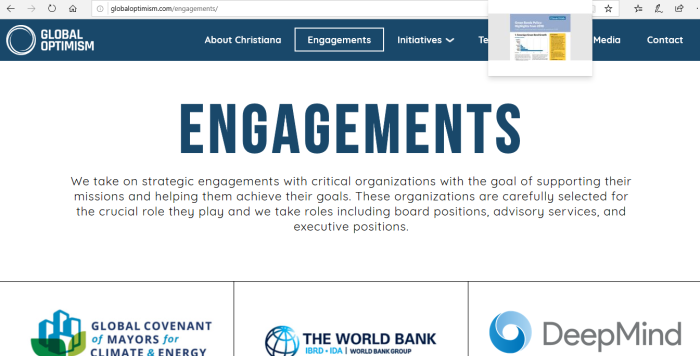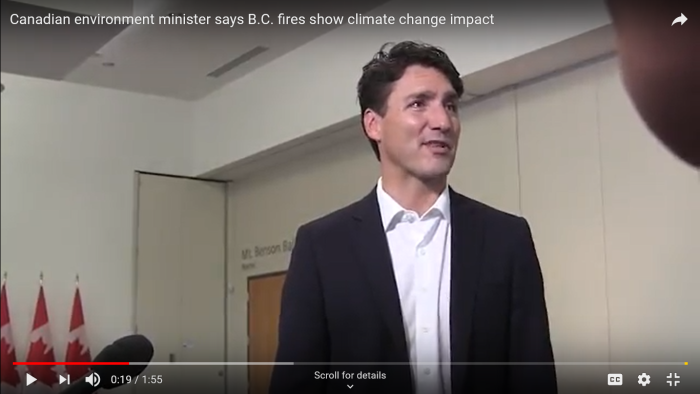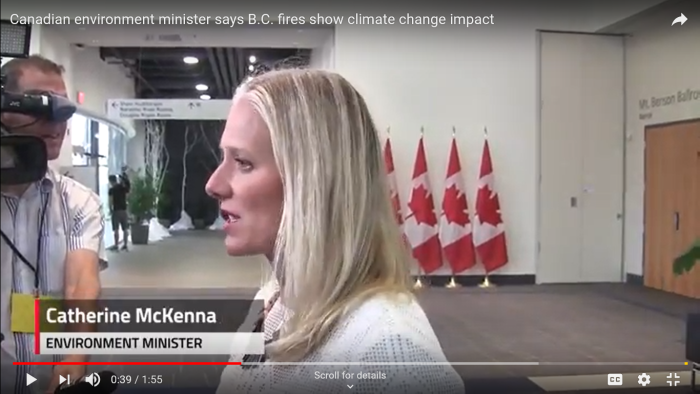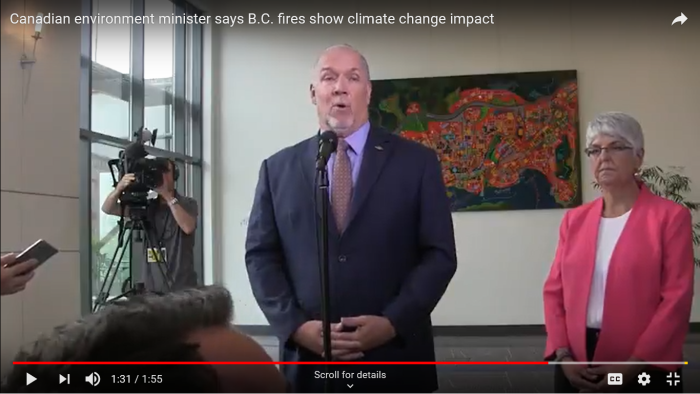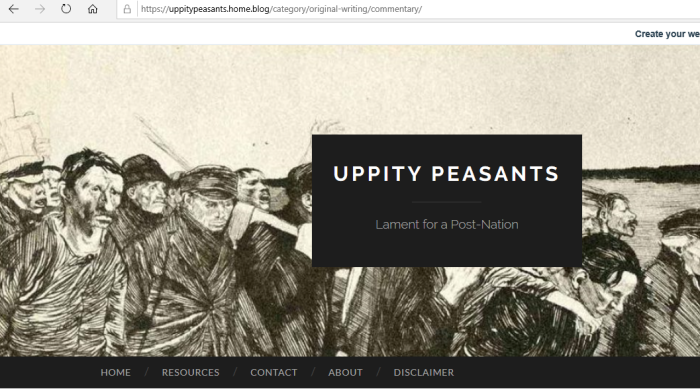(Shiva Ayyadurai, Republican and former Senate Candidate explains how the Carbon tax work.)
(Alternative explanation: Cosmic rays and the sun contribute far greater to climate change than does Carbon Dioxide)
(“Conservative” Garnett Genuis defends Paris Accord)
(UN Green Climate Fund)

(Getting rich off Carbon credits)
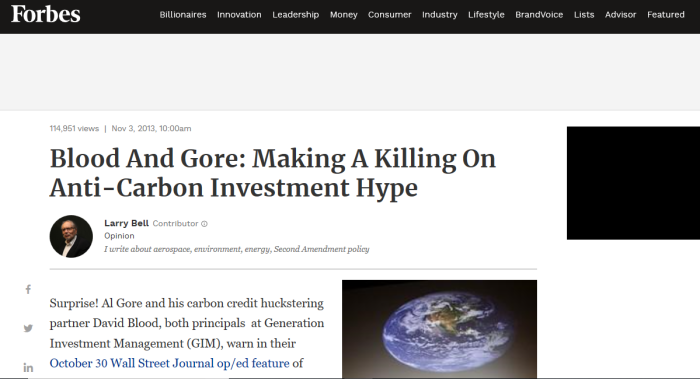
The first video explains plainly in the first video how the UN IPCC system works. It is all about generating revenue in order to use in creating climate bonds. The money is acquired through underhanded and deceptive means.
The second video offers a much more plausible explanation for variations in temperature: Cosmic rays and the sun. This half hour video gets into it.
Although Dr. Ayyadurai explains this from an American perspective, the issues are much the same in Canada. As such, it is very related to our situation.
It’s a shame that he ended up losing to Elizabeth Warren in the Senate race. Dr. Ayyadurai would have made a fine Senator. But Pocahontis (or Faux-cahontis) has name recognition and is able to run on that alone.
1. Debunking The Climate Change Scam
CLICK HERE, for #1: major lies that the climate frauds tell.
CLICK HERE, for #2: review of the Paris Accord.
CLICK HERE, for #3: Bill C-97, the GHG Pollution Pricing Act.
CLICK HERE, for #4: in 3-2 decision, Sask. COA allows carbon tax.
CLICK HERE, for #5: controlled opposition to carbon tax.
CLICK HERE, for #6: controlled opposition Cons ==> Supreme Court.
CLICK HERE, for #7: climate bonds pitched as $100T industry.
CLICK HERE, for #8: Joel Wood pitching various pricing options.
CLICK HERE, for #9: Mark Carney and UN climate finance.
CLICK HERE, for #10: Goldman Sachs, Obama, Clinton, Chicago CX.
CLICK HERE, for #11: Coronavirus, Pirbright Inst, Gates, Depopulation.
CLICK HERE, for #12: AOC and the “Green New Deal”.
CLICK HERE, for #13: UN seeks new development financing.
CLICK HERE, for #14: New Development Fund, bait-and-switch.
CLICK HERE, for #15: UN exploring global taxation ideas.
CLICK HERE, for BOLD Like A Leopard Guest Posting.
2. Important Links
CLICK HERE, for the Paris Accord, full text.
CLICK HERE, for the UN Green Climate Fund.
CLICK HERE, for WEF explaining carbon credits and trading.
CLICK HERE, for a Forbes article explaining the carbon credit scheme..
3. Dr. Ayyadurai Video In Point Form
- (Pre-Carbon tax) Products are made
- (Post-Carbon tax) Products are still made. Now taxes charged.
- Carbon taxes are paid to UN IPCC, others
- UN IPCC issues “Carbon credits”. In essence, this is permission to “pollute”. Never mind that Carbon Dioxide isn’t pollution, but a natural byproduct of combustion, or even breathing. But anyway….
- So called “Carbon credits” actually go into the bond market, and allow the UN (and approved others) to use it as an investment vehicle. This is a trillion dollar industry.
- Former U.S. Vice President Al Gore once monopolized the market.
- UN IPCC used their PR branch (or propaganda arm) to pressure the US into playing ball with the Paris Accord, despite the obvious fraud.
- US pressured to create $100B “Green Fund”
- “Green Fund” used to bribe 190 other nations into joining Paris Accord, and thus legitimizing the UN scam. Odd wording here
- Advisors and NGOs who used US Green Fund money to influence joining of Paris Accord ended up enriching themselves in the process
- Scientists “alter” findings to make situation seem worse.
- Developing countries allowed to make situation worse. As an example, China puts out 11B tons/year now, and will be able to emit 22B tons in 2030.
- After 2030, China will be able to buy “Carbon credits”.
- UN paid “influencers” convince their nations to join Paris Accord
- Paying $100B to the influencers is pocket change, as the Carbon credit commodities market will generate trillions in the end. A great investment.
- This is really about virtue signalling.
- Environmental data manipulated to generate support.
- No conclusive evidence of temperature rise.
- 1st world nations will pay more for everything.
- 3rd world will (for years) be exempt.
- UN IPCC and allies are only ones who will benefit.
- Trump made right decision to pull out of Paris Accord.
Just 12 minutes in this video and Dr. Shiva Ayyadurai completely and thoroughly explained it. These Carbon taxes would end up in the UN, and go into the commodities market, generating trillions of dollars in revenue. The “Green Fund” is just a fund to bribe corrupt officials into playing along. And none of this would do anything to cut pollution.
One small criticism: it would have been nice to point out that Carbon Dioxide is not pollution. It is a naturally occurring compound. If it was reduced to zero, life would stop altogether.
However, in the other video provided, a sound and plausible explanation is offered. It is cosmic rays and solar activity that leads to significant variations in temperatures.
4. The Paris Accord: Articles 2, 4, 9
(Article 2)
1. This Agreement, in enhancing the implementation of the Convention, including its objective, aims to strengthen the global response to the threat of climate change, in the context of sustainable development and efforts to eradicate poverty, including by:
(c) Making finance flows consistent with a pathway towards low greenhouse gas emissions and climate-resilient development.
(Article 4)
3. Each Party’s successive nationally determined contribution will represent a progression beyond the Party’s then current nationally determined contribution and reflect its highest possible ambition, reflecting its common but differentiated responsibilities and respective capabilities, in the light of different national circumstances.
4. Developed country Parties should continue taking the lead by undertaking economy-wide absolute emission reduction targets. Developing country Parties should continue enhancing their mitigation efforts, and are encouraged to move over time towards economy-wide emission reduction or limitation targets in the light of different national circumstances.
5. Support shall be provided to developing country Parties for the implementation of this Article, in accordance with Articles 9, 10 and 11, recognizing that enhanced support for developing country Parties will allow for higher ambition in their actions.
6. The least developed countries and small island developing States may prepare and communicate strategies, plans and actions for low greenhouse gas emissions development reflecting their special circumstances.
(Article 9)
1. Developed country Parties shall provide financial resources to assist developing country Parties with respect to both mitigation and adaptation in continuation of their existing obligations under the Convention.
2. Other Parties are encouraged to provide or continue to provide such support voluntarily.
3. As part of a global effort, developed country Parties should continue to take the lead in mobilizing climate finance from a wide variety of sources, instruments and channels, noting the significant role of public funds, through a variety of actions, including supporting country-driven strategies, and taking into account the needs and priorities of developing country Parties. Such mobilization of climate finance should represent a progression beyond previous efforts.
4. The provision of scaled-up financial resources should aim to achieve a balance between adaptation and mitigation, taking into account country-driven strategies, and the priorities and needs of developing country Parties, especially those that are particularly vulnerable to the adverse effects of climate change and have significant capacity constraints, such as the least developed countries and small island developing States, considering the need for public and grant-based resources for adaptation.
5. Developed country Parties shall biennially communicate indicative quantitative and qualitative information related to paragraphs 1 and 3 of this Article, as applicable, including, as available, projected levels of public financial resources to be provided to developing country Parties. Other Parties providing resources are encouraged to communicate biennially such information on a voluntary basis.
6. The global stock take referred to in Article 14 shall take into account the relevant information provided by developed country Parties and/or Agreement bodies on efforts related to climate finance.
7. Developed country Parties shall provide transparent and consistent information on support for developing country Parties provided and mobilized through public interventions biennially in accordance with the modalities, procedures and guidelines to be adopted by the Conference of the Parties serving as the meeting of the Parties to this Agreement, at its first session, as stipulated in Article 13, paragraph 13. Other Parties are encouraged to do so.
8. The Financial Mechanism of the Convention, including its operating entities, shall serve as the financial mechanism of this Agreement.
9. The institutions serving this Agreement, including the operating entities of the Financial Mechanism of the Convention, shall aim to ensure efficient access to financial resources through simplified approval procedures and enhanced readiness support for developing country Parties, in particular for the least developed countries and small island developing States, in the context of their national climate strategies and plans.
These are quotes directly from the Paris Accord. In particular, Article 9 makes it abundantly clear that this is all about “financial flow” and a transfer of wealth from the developed world to the developing world.
Actual environmental changes seem almost to be an afterthought. This is a giant wealth transfer scheme.
5. The Green Climate Fund
The Green Climate Fund (GCF) is a new global fund created to support the efforts of developing countries to respond to the challenge of climate change. GCF helps developing countries limit or reduce their greenhouse gas (GHG) emissions and adapt to climate change. It seeks to promote a paradigm shift to low-emission and climate-resilient development, taking into account the needs of nations that are particularly vulnerable to climate change impacts.
It was set up by the 194 countries who are parties to the United Nations Framework Convention on Climate Change (UNFCCC) in 2010, as part of the Convention’s financial mechanism. It aims to deliver equal amounts of funding to mitigation and adaptation, while being guided by the Convention’s principles and provisions.
When the Paris Agreement was reached in 2015, the Green Climate Fund was given an important role in serving the agreement and supporting the goal of keeping climate change well below 2 degrees Celsius.
Responding to the climate challenge requires collective action from all countries, including by both public and private sectors. Among these concerted efforts, advanced economies have agreed to jointly mobilize significant financial resources. Coming from a variety of sources, these resources address the pressing mitigation and adaptation needs of developing countries.
GCF launched its initial resource mobilization in 2014, and rapidly gathered pledges worth USD 10.3 billion. These funds come mainly from developed countries, but also from some developing countries, regions, and one city (Paris).
GCF’s activities are aligned with the priorities of developing countries through the principle of country ownership, and the Fund has established a direct access modality so that national and sub-national organisations can receive funding directly, rather than only via international intermediaries.
Source is right here.
To reiterate from before: the Paris Agreement isn’t really about reducing greenhouse gases. It is a way of extracting large sums of money from “polluters” in order to finance the UN’s various agendas.
While the website sounds well meaning enough, an important detail is left out: namely the huge profit that will be derived from using these funds. As such, the conflict of interest isn’t being disclosed.
6. A $100 Trillion Industry
This was addressed in a previous article. While the public is roped into supporting the agenda on humanitarian and compassionate grounds, the truth is quite different.
Climate bonds is an industry. It’s an industry that has potential for explosive growth, as long as governments keep pouring money into it.
The climate change agenda has nothing to do with protecting the environment. It is all about the “illusion” of protecting the environment. And money.
7. Carbon Credit Profiteering
Gore and Blood, the former chief of Goldman Sachs Asset Management (GSAM), co-founded London-based GIM in 2004. Between 2008 and 2011 the company had raised profits of nearly $218 million from institutions and wealthy investors. By 2008 Gore was able to put $35 million into hedge funds and private partnerships through the Capricorn Investment Group, a Palo Alto company founded by his Canadian billionaire buddy Jeffrey Skoll, the first president of EBay Inc. It was Skoll’s Participant Media that produced Gore’s feverishly frightening 2006 horror film, “An Inconvenient Truth”.
Still, the U.S. Government Accounting Office can’t figure out what benefits taxpayers are getting from those many billions of dollars spent each year on policies that are purportedly aimed at addressing climate change. A May 2011 GAO report noted that while annual federal funding for such activities has been increasing substantially, there is a lack of shared understanding of strategic priorities among the various responsible agency officials. This assessment agrees with the conclusions of a 2008 Congressional Research Service analysis which found no “overarching policy goal for climate change that guides the programs funded or the priorities among programs.“
As noted in the Forbes article, Al Gore has been able to become extremely wealthy with this scheme. Huge sums of money are taken as “Carbon taxes” and then plowed into the climate bonds industry.
While this hunger for Carbon taxes is spun as necessary for the planet, too little attention is paid to the profiteering that goes on behind it. It is difficult to take these pleas seriously when there is such a compelling profit motive.
And as the Government has noted, it’s very unclear what — if anything — taxpayers are actually getting in return for their money. It also isn’t obvious what goals or direction these programs are actually working towards.
The answer is very simple: the people running the scam want it to stay operational as long as possible. The goal is money, not ideology.
This is just one article. A quick internet search will reveal more details and examples of cashing in on this “environmental” agenda.
Either we tax countries for continuing to “pollute”, or we force them to shut down significant parts of their economy. Since the latter can’t happen without dropping the standard of living, it becomes necessary to pay up.
It’s like the mafia, except disguised as environmentalism.
8. Various UN Taxation Schemes
(A) New Development Financing: Carbon Tax Alone Could Generate $250/year, 2012
(B) UN: “Int’l Tax” To Raise $400B, 2012
(C) Paris Accord “Financial Flows”, 2015
(D) Addis Ababa, Financing Devel’t, 2015
(E) Green Financing, Sust Develop, 2016
(F) Leverage African Pension Plans, 2017
(G) Finance 2030 SDG, $5-7T Needed, 2018
(H) From Billions To Trillions, 2018
(I) Sustainable Financing Report, 2019
(J) UN Enviro Program, Finance Initiative
(K) Capital Development Finance
A few of these have been addressed in other articles. Please visit the “Climate Change Scam” section on the righthand toolbar.
This should alarm people. The UN is regularly coming up with new and innovative taxation methods. This is only a handful of them.
The Paris Accord is hardly an isolated cause.
9. Closing Thoughts On Subject
Dr. Shiva Ayyadurai is right regarding his explanation of the Paris Accord. It is an elaborate scam. While billions are pumped into climate funds, that is not the whole story. Those billions are then used to entice other nations to join the Paris Accord, thus giving it more legitimacy. The final goal is the trillions that can be gained later.
Furthermore, his explanation that cosmic radiation and solar activity play a greater role in fluctuating temperatures seems to make sense.
The Paris Accord has nothing to do with improving the environment either. All of its “mitigation” strategies are just talk. The Agreement is about generating large transfers of wealth on a continuous basis. Read the Agreement, in particular Article #9. The text leaves no doubt that money is the driving force behind it.
Climate bonds, and related “investments” are a huge industry, worth perhaps $100 trillion. This is the reason behind it all. So much opportunity. But the Carbon taxes (and other related fees), are entirely based on false pretenses.
The real losers are consumers and taxpayers, particularly from the developed world. These Carbon taxes (or “price on pollution” as claimed in Canada) will be used to funding for the UN IPCC and select allies to enrich themselves.


